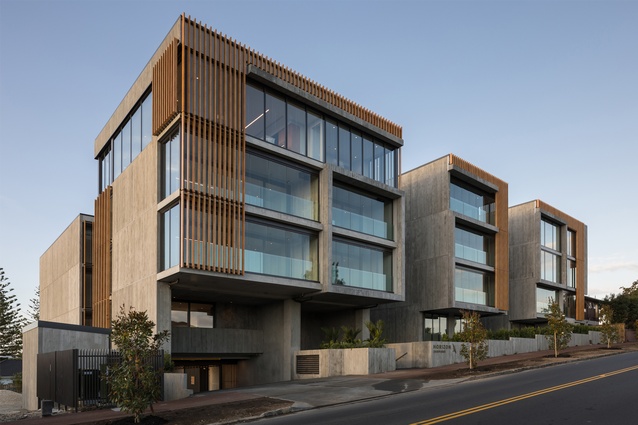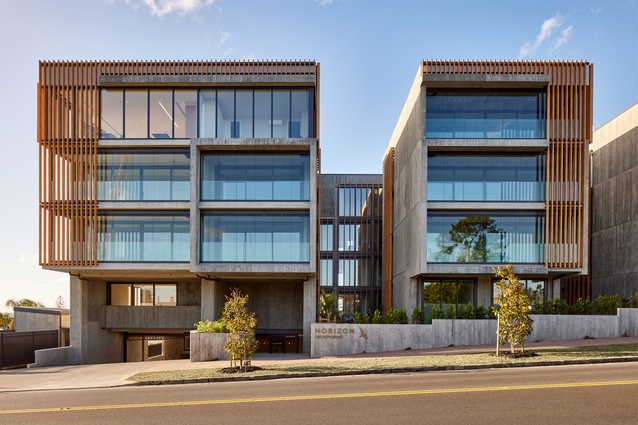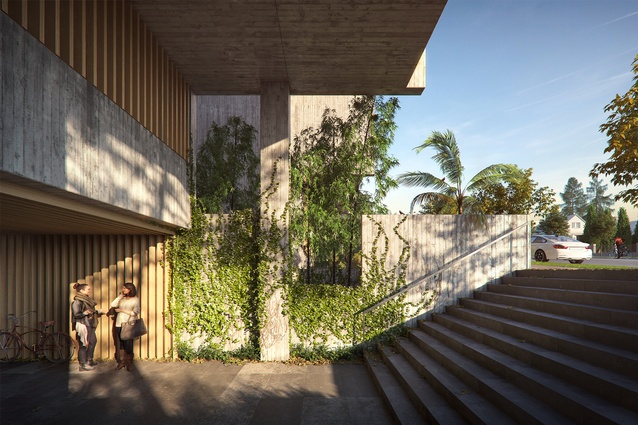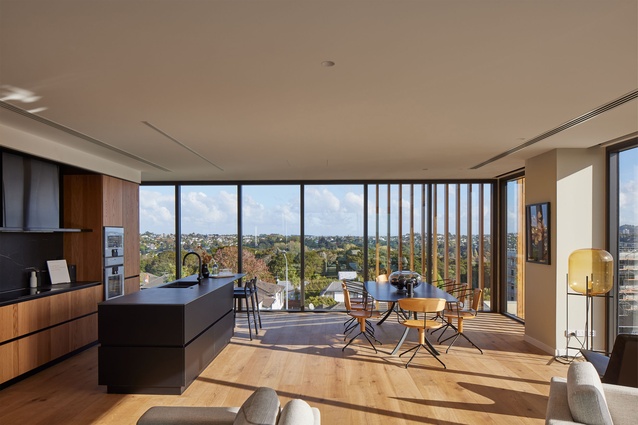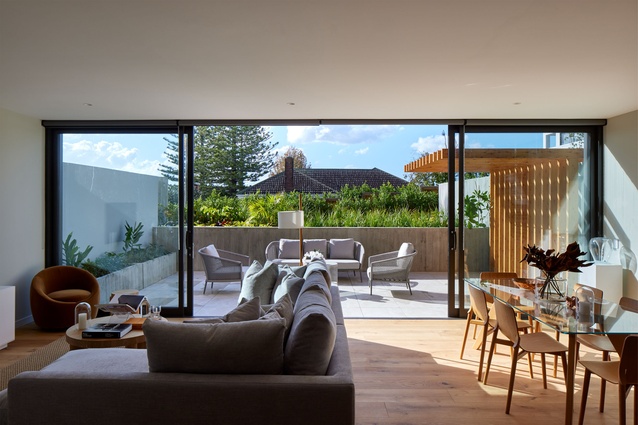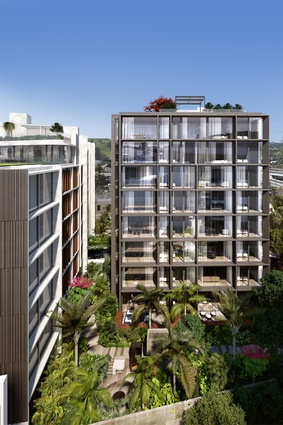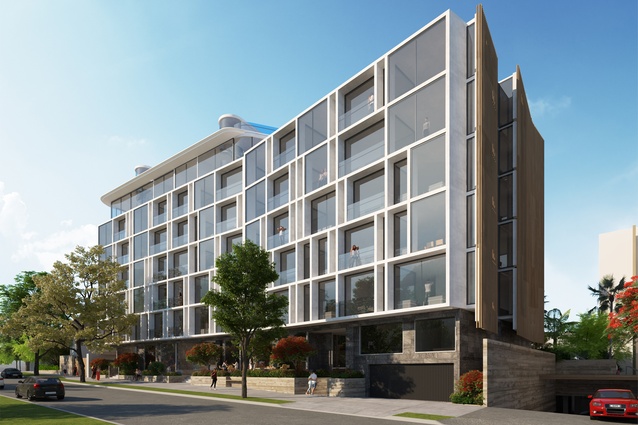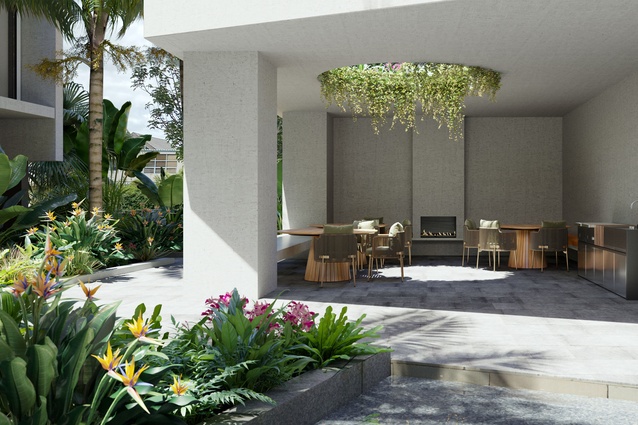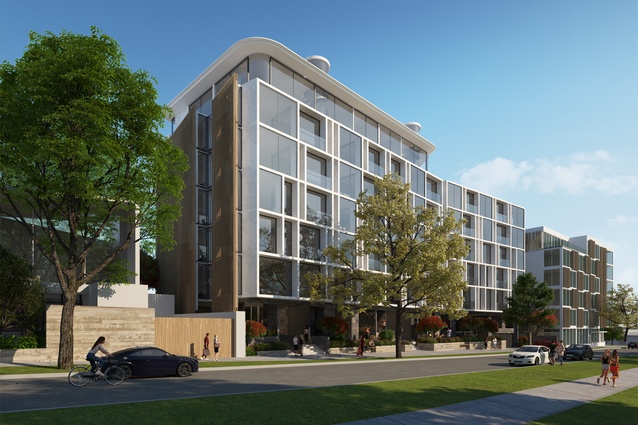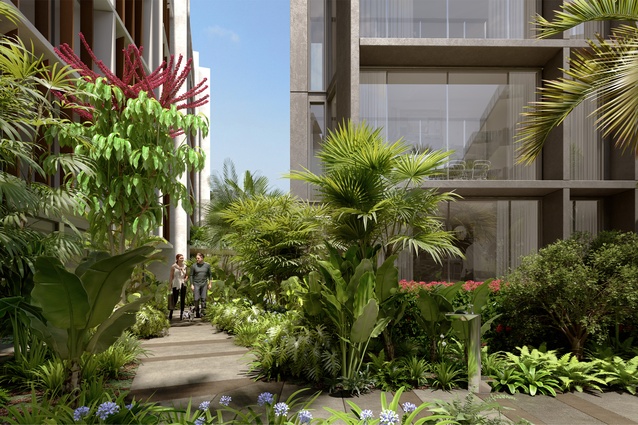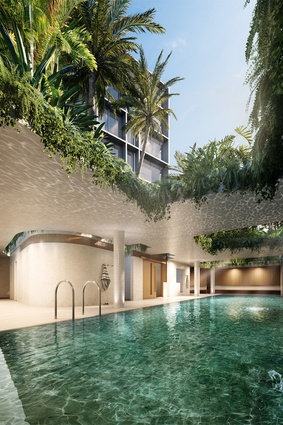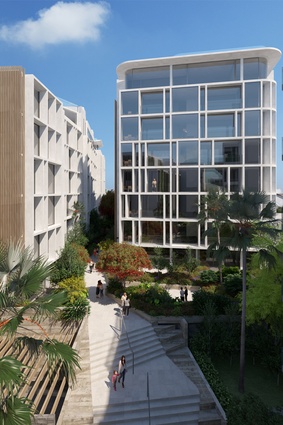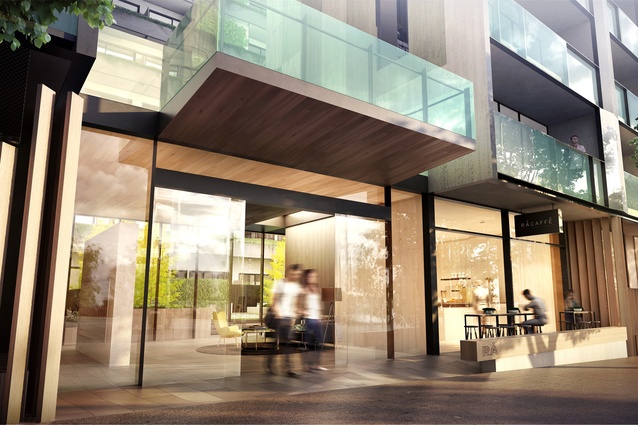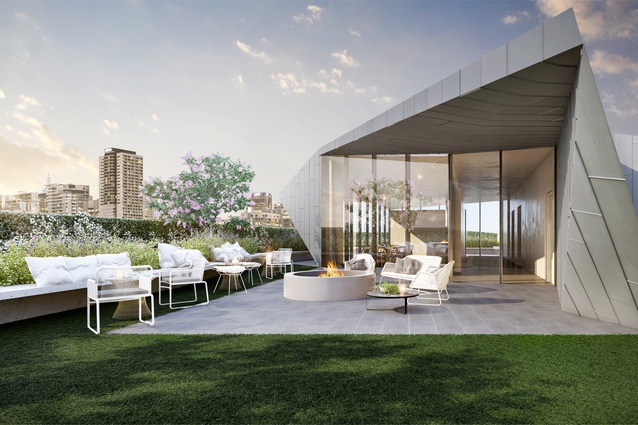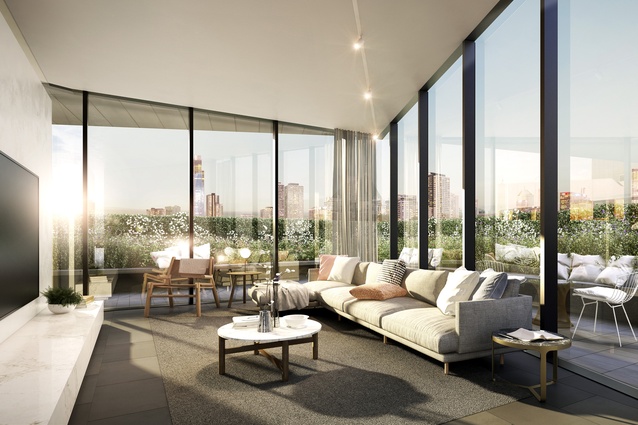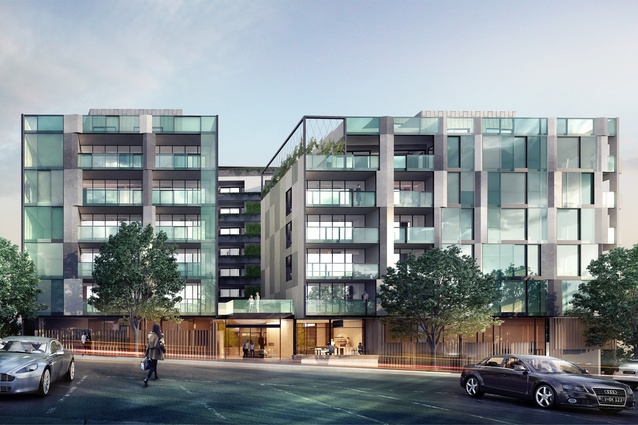Design critical to NZ housing intensification
Buchan Auckland principal architect Rob Guild says New Zealand should be looking afield to well-designed cities, such as Melbourne, as housing intensification risks poor design and urban amenity.
He says while housing supply is urgent, New Zealand is at a crossroads with a boom in medium-density housing developments once new planning controls become operative later this year.

“Auckland, in particular, needs a more coordinated design strategy for how density occurs to ensure proper amenity can serve the community,” Guild says.
New Zealand reached a new record in the number of homes consented to in the year ending February 2022. Building approvals surpassed 49,700 (up 25 per cent), compared with the same period in 2021, according to Stats NZ. Townhouses, flats and units (17,403) accounted for 35 per cent of applications, with 3910 apartments consented (8%). Auckland, alone, experienced a 22% upshoot in home consents compared to the previous year.
A once-in-a-lifetime opportunity to define medium density:
Guild argues Central Government and Local Governments need proactive solutions in how they can assist developers and architects to design better.
He says New Zealand would benefit from the reinstatement of a Central Government Architect to champion design quality and an informed set of guidelines, as well as promote the positive social outcomes good design has in addressing issues such as housing affordability, sustainability and city growth.
The deregulation and privatisation of New Zealand’s Architectural Division and Ministry of Works in 1988 meant practice-informed government policy and regulation, and policy-informed architectural design for the built environment was severed and has remained so ever since.
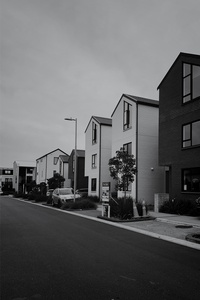
Australia has a network of government architects, which set best practise for the design of good quality buildings and public spaces. A government architect is appointed in most Australian states. The Government Architects Network of Australia (GANA), a formalised, national collaborative group, meets annually to share and transfer knowledge and research. It provides authoritative and consolidated advice on State and Federal policies relating to the built environment to influence good design practice.
While bodies like Kāinga Ora are focused on providing affordable housing of various types and tenures, and connecting homes with jobs, transport, open spaces and services, Guild says New Zealand severely lacks design governance.
The new National Policy Statement on Urban Development (NPS-UD), provides some positive steps in promoting higher density around town centres and transport nodes, with less prescription around car parking. However, Guild says it fails to focus on design quality of future developments and the level of amenity human beings need in higher density settings.
“The rules and regulations in our planning controls are prescriptive rather than descriptive. They don’t talk about the important qualities that humans need in terms of light, privacy, sun and the environment that they live in. We need to foster creativity and collegial working relationships between architects, professional, technical and policy staff in the engineering, town planning, property services and legal disciplines – that’s where the role of a Government Architect steps in.”
Radically rethinking the future of density in New Zealand requires us to look afield:
Guild suggests New Zealand look abroad to cities like Melbourne to benchmark successful policies and projects to help local councils improve new developments back home.
“Melbourne has great examples where its local government has been proactive in using their urban design department to facilitate positive outcomes for their residents and their communities,” he says.
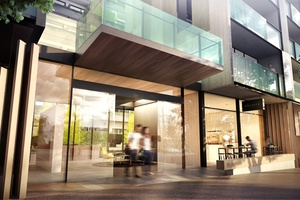
Developer incentives exist if projects contribute positively to the local context and neighbourhood character in their designs, which can result in an uplift in development area to offset additional costs that developers may incur.
Guild refers to Victorian Government-led design competitions to promote medium-density innovation without limiting creativity. The successes of these initiatives have resulted in new frameworks for the outcomes the government wants to see and will reward. “If you use those, you get a fast-tracked planning outcome, for example.”
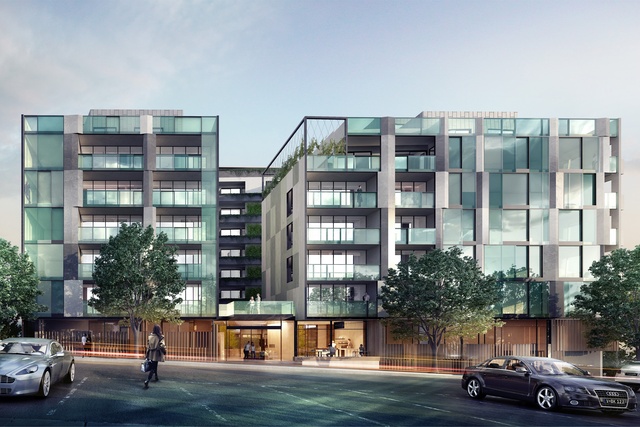
Last year, Victoria also established a Central Melbourne Design Guide to revitalise the city, including the requirement for inner-city design projects to be people-centred, with a special focus on street-level design.
The Victorian Government also has a Better Apartments Design Standards policy in place which sets design standards for apartment buildings around external amenities, including green, open space, accommodating families and the safety and privacy of residents. It stipulates that all homes have access to air, nature, sunlight and personal space and that they make a positive contribution to city neighbourhoods through their design and amenity. The aim of the guidelines is not to stifle creativity, but to achieve quality, liveable and attractive apartment buildings that increase green canopy cover in urban areas and contribute positively to the local context and neighbourhood character.
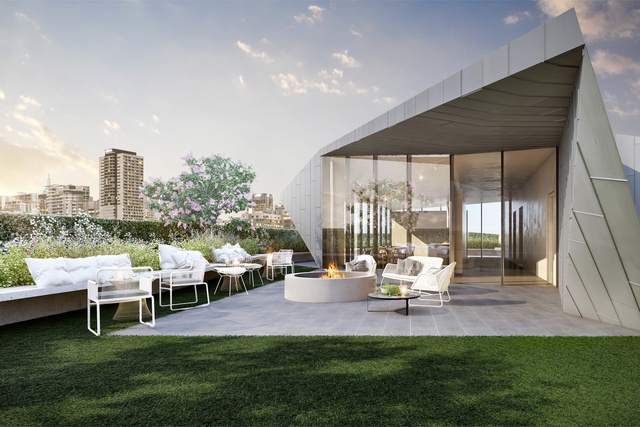
New Zealand needs more apartments, designed well:
Guild believes the pace of the housing boom in New Zealand will be dictated by a steady renewal in migration. Border closures and travel restrictions triggered a net migration loss of 3900 in 2021 — the first time since 2012. While some economists predict up to 20,000 New Zealanders a year could leave for Australia, in recent decades, outflow figures have been offset by immigration numbers arriving from other countries.
Guild says new migrants need somewhere to live. Population growth driven by migration has historically put pressure on housing supply — one that is already under immense affordability stress. “The primary issue for a lot of people is getting any home,” Guild says. “They’re living in caravans and garages because they simply can’t get one. It’s dire for a large sector of our population.” However, he vehemently opposes “density for the sake of density”:
“At the moment, it feels like we are focussed on building any type of house to provide accommodation, which I fully understand and appreciate. However, these buildings will be here for a long time. You only get one chance to get this right. As much as the legislation — I feel — is being rushed through, there is still time with concerted effort to make sure higher density outcomes are positive — that is, building quality housing that is not only affordable now, but also delivers a legacy of housing options for future generations. …There’s a risk we will receive low-quality housing and my biggest fear is that we will lose sight of what people need to live in a quality environment, which is a great concern.”
Architects may not be able to influence a site’s location, but they can push for good design and more diversity within a complex, to result in more amenities. Guild says prospective design guidelines would provide practical ideas and standards for siting and building arrangement, building performance and fundamental dwelling amenities.
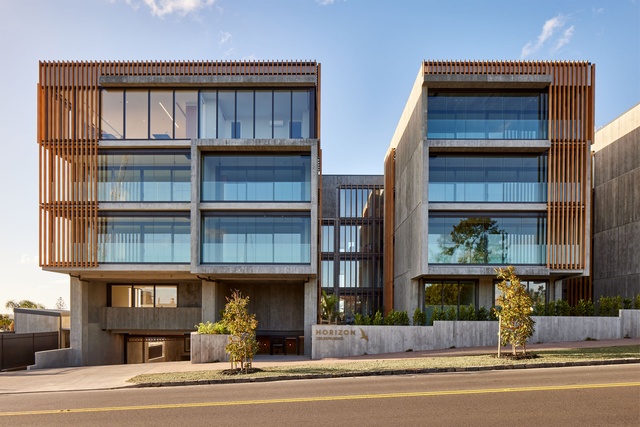
Buchan’s Horizon Apartments in Auckland is an interesting example of how small interventions can make a real difference in creating community and amenity. The project, by Reside, has a variety of apartment types and affordability options including one, two and three-bedroom apartments plus penthouses located within three pods and a north-facing block. Each pod has its own separate entry and has been carefully designed to foster a sense of community among each group of neighbours, not to mention helping with privacy and security. Horizon Apartments has a strong dialogue with the street, purposefully set back from the road to maximise views and respond to residential neighbours. The architects say the composition of a series of smaller buildings enables the development to “breathe”.
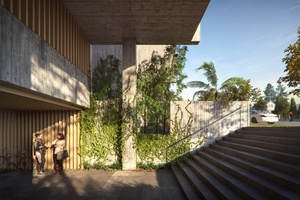
Guild says it’s no longer enough to think about an apartment complex on its own. “We need to consider what it offers the broader community,” he says. “Is there a grocer at the base? Does it offer gym facilities and communal picnic spaces? Is it a vibrant destination where people want to be? Will it stand the test of time in the long term?”
Buchan’s design response at St Marks (Stage 2), in Remuera, cleverly melds residential and communal amenities in a medium-density setting. The development is divided into two massings and pulled back from the boundary to maximise landscaping and integration into the street. The second stage, designed by Buchan, consists of 70 apartments. A terraced garden unifies the eastern and western buildings and creates a community focus. A ‘green courtyard’ links the terrace garden to a secluded fern garden, while simultaneously letting light, landscaping and cross ventilation into the contiguous apartments.
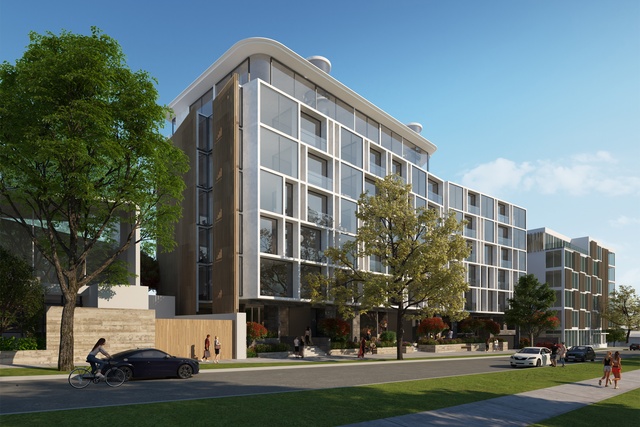
Dense plantings of edible fruits, tall trees and vertical greenery provide shade, privacy and encourage gathering. Indoors, the lobby space with barista, lounge and library promotes a sense of community. Proposed future retail activation to the ground floor includes a florist, with through-site links to an existing café and restaurant. The apartments are specifically designed to facilitate “ageing in place”, featuring larger doors and a large lift car. External balconies can double as living room, gym, home office etc., to flex with residents’ needs. Guild says small design considerations can have a significant impact on liveability.
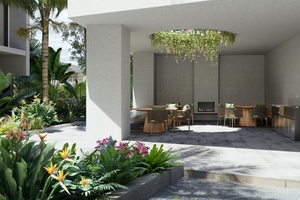
“Central and Local Governments need to commit to a higher quality of design in medium-density housing. We need to think about designing apartments that have high amenity, flexibility and create vibrant communities urgently, before it’s too late.
“People require a basic quality of life, which is access to outdoor spaces, sunlight, privacy and peace. If we forget those, we do that at our peril into the future.”
Buchan is an acclaimed global architecture, interior, masterplanning and brand-experience studio with distinction in retail, commercial, mixed-use, residential, hotels and hospitality.
Go to buchangroup.com for more information on these developments and other projects.

